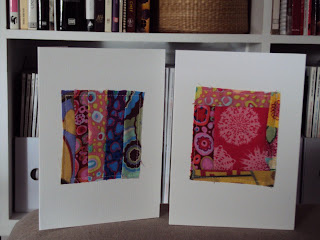Gift wrapping is like any other creative process. I like to think about the present, the person I'm giving it to, the colours the person likes, whether these colours are appropriate for the gift and the occasion, the balance of decoration relative to the size of the present, differences in texture and, importantly, the kind of mood I'm in. I tend to use plain wrapping paper, usually glossy white or brown, rather than patterned paper, as it allows greater freedom when choosing the decorative elements. I usually try out several combinations of ribbons and decoration before deciding on the final one. Sometimes things comes together quickly, and sometimes they don't, and you just have to go with the flow. When nothing is coming together, I go to Plan B, which involves a box or a bag with lots of cellophane or tissue paper.
This morning I wrapped a book on flower arranging for a friend's birthday.
As my friend likes pastel colours and the book includes lots of pictures of pastel-coloured arrangements, I decided to wrap the present in soft colours. And because the book is about flowers, there needed to be a flower somewhere. Fortunately, I had a millinery flower in my collection I had bought at a post-Melbourne Cup sale at Spotlight a couple of years ago.
I started by inserting a glue-dipped stem into the base of the flower.
I then covered the base of the flower with floral tape.
I wrapped the book in thick white glossy wrapping paper, and covered it again with a soft green, crepe-like paper.
I then wrapped the present with silver ribbon, by fixing one end to the underside and winding the ribbon around the present Egyptian mummy-style.
I then inserted the flower underneath the ribbon, et voila!



























